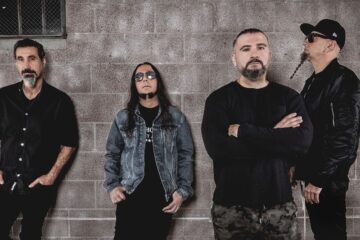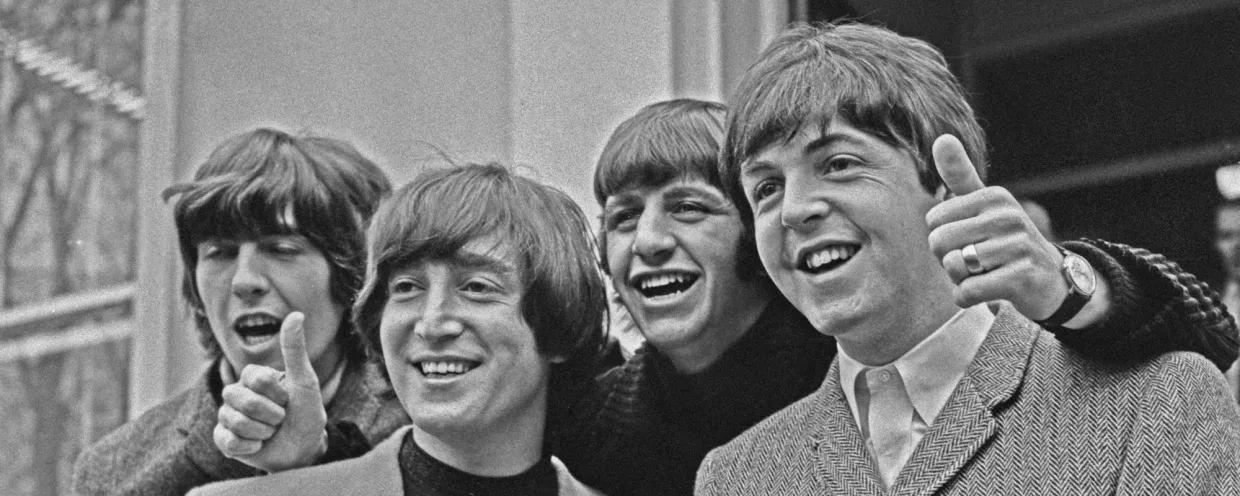Alistair Taylor was there when it happened. He accompanied Brian Epstein to the Cavern Club on November 9, 1961, to see four young boys dressed in black leather as they performed for the lunchtime crowd. He was in the room when those boys signed a management agreement with Epstein and even signed the document as a witness. The Beatles christened Taylor with the nickname “Mr. Fixit” as he carried out his duties as Epstein’s assistant. Everything from buying cigarettes to devising escape plans from pressing crowds of teenagers to assisting with real estate acquisitions as each Beatle attained new levels of tax brackets.
After Eptstein’s death in August 1967, when The Beatles started a multimedia corporation called Apple, Taylor dressed as a one-man band for an advertising campaign designed to attract talent. He would become the general manager of Apple Corp. When the self-titled Beatles album (commonly referred to as the White Album) was released, Taylor’s voice can be heard in “Revolution 9.” One of his biggest contributions to The Beatles came from a conversation he had with Paul McCartney about songwriting. Let’s take a look at the story behind “Hello, Goodbye” by The Beatles.
You say, “Yes.” I say, “No”
You say, “Stop,” but I say, “Go, go, go”
Oh no
You say, “Goodbye,” and I say, “Hello, hello, hello”
I don’t know why you say, “Goodbye,” I say, “Hello, hello, hello”
I don’t know why you say, “Goodbye,” I say, “Hello”
The Conversation
While visiting McCartney at his St John’s Wood, London, home on Cavendish Avenue, Taylor asked the Beatle about songwriting. McCartney offered to demonstrate his process. Taylor wrote about the incident in his 1988 book, Yesterday, “Paul marched me into the dining room, where he had a marvelous old hand-carved harmonium. ‘Come and sit at the other end of the harmonium. You hit any note you like on the keyboard. Just hit it, and I’ll do the same. Now, whenever I shout out a word, you shout the opposite, and I’ll make up a tune. You watch, it’ll make music.’ … ‘Black,’ he started. ‘White,’ I replied. ‘Yes.’ ‘No.’ ‘Good.’ ‘Bad.’ ‘Hello.’ ‘Goodbye.’ I wonder whether Paul really made up that song as he went along or whether it was running through his head already.”
I say, “High”, you say, “Low”
You say, “Why?” And I say, “I don’t know”
Oh no
You say, “Goodbye,” and I say, “Hello, hello, hello” (hello, goodbye, hello, goodbye)
I don’t know why you say, “Goodbye” (hello, goodbye)
I say, “Hello, hello, hello” (Hello, goodbye, hello, goodbye, hello, goodbye)
I don’t know why you say “Goodbye.” I say, “Hello” (hello, goodbye)
A Song of Duality
McCartney was onto something. Although he worked on the beginnings of the song with Taylor, the songwriting credit went to Lennon and McCartney, as all of the songs did. In 1998, McCartney told author Barry Miles in the book Many Years from Now, “‘Hello, Goodbye’ was one of my songs. There are Geminian influences here I think: the twins. It’s such a deep theme in the universe, duality—man, woman, black, white, ebony, ivory, high, low, right, wrong, up, down, hello, goodbye—that it was a very easy song to write. It’s just a song of duality, with me advocating the more positive. You say goodbye. I say hello. You say stop, I say go. I was advocating the more positive side of the duality, and I still do to this day.”
Why, why, why, why, why, why, do you say, “Goodbye, goodbye, bye, bye”
Oh no
You say, “Goodbye,” and I say, “Hello, hello, hello”
I don’t know why you say “Goodbye,” I say, “Hello, hello, hello”
I don’t know why you say “Goodbye,” I say, “Hello”
“We Just Threw Something in at the End”
John Lennon later dismissed “Hello, Goodbye,” referring to it as “three minutes of contradictions and meaningless juxtapositions.” In 1980, Lennon spoke about the song to author David Sheff in All We Are Saying, “That’s another McCartney. Smells a mile away, doesn’t it? An attempt to write a single. It wasn’t a great piece; the best bit was the end, which we all ad-libbed in the studio, where I played the piano. Like one of my favorite bits on ‘Ticket to Ride.’ where we just threw something in at the end.”
You say, “Yes,” I say, “No” (I say, “Yes,” but I may mean, “No”)
You say, “Stop.” I say, “Go, go, go.” (I can stay still. It’s time to go)
Oh, oh no
Promotional Videos
As The Beatles had stopped touring by the time of this song’s release, they decided promotional films on television would help sales. The plan was successful, as the song hit the top spot in many countries around the world. McCartney said in The Beatles Anthology, “Directing a film is something that everyone always wants to get into. It was something I’d always been interested in until I actually tried it. Then I realized it was too much like hard work. Someone summed it up when they said: ‘There’s always someone arriving saying, “Do you want the gold pistols or the silver pistols?” ‘Then you think: ‘Um, um …’ There was so much of that going on—so many decisions to be made—that I ended up hating it. I didn’t really direct the film—all we needed was a couple of cameras, some good cameramen, a bit of sound, and some dancing girls. I thought, ‘We’ll just hire a theatre and show up there one afternoon.’ And that was what we did: we took our Sgt. Pepper suits along and filmed at the Saville Theatre in the West End.”
You say, “Goodbye,” and I say, “Hello, hello, hello”
I don’t know why you say “Goodbye.” I say, “Hello, hello, hello”
I don’t know why you say “Goodbye.” I say, “Hello, hello, hello”
I don’t know why you say, “Goodbye.” I say, “Hello-wow, oh, hello”
Hela, heba, helloa hela, heba, helloa hela, heba, helloa



